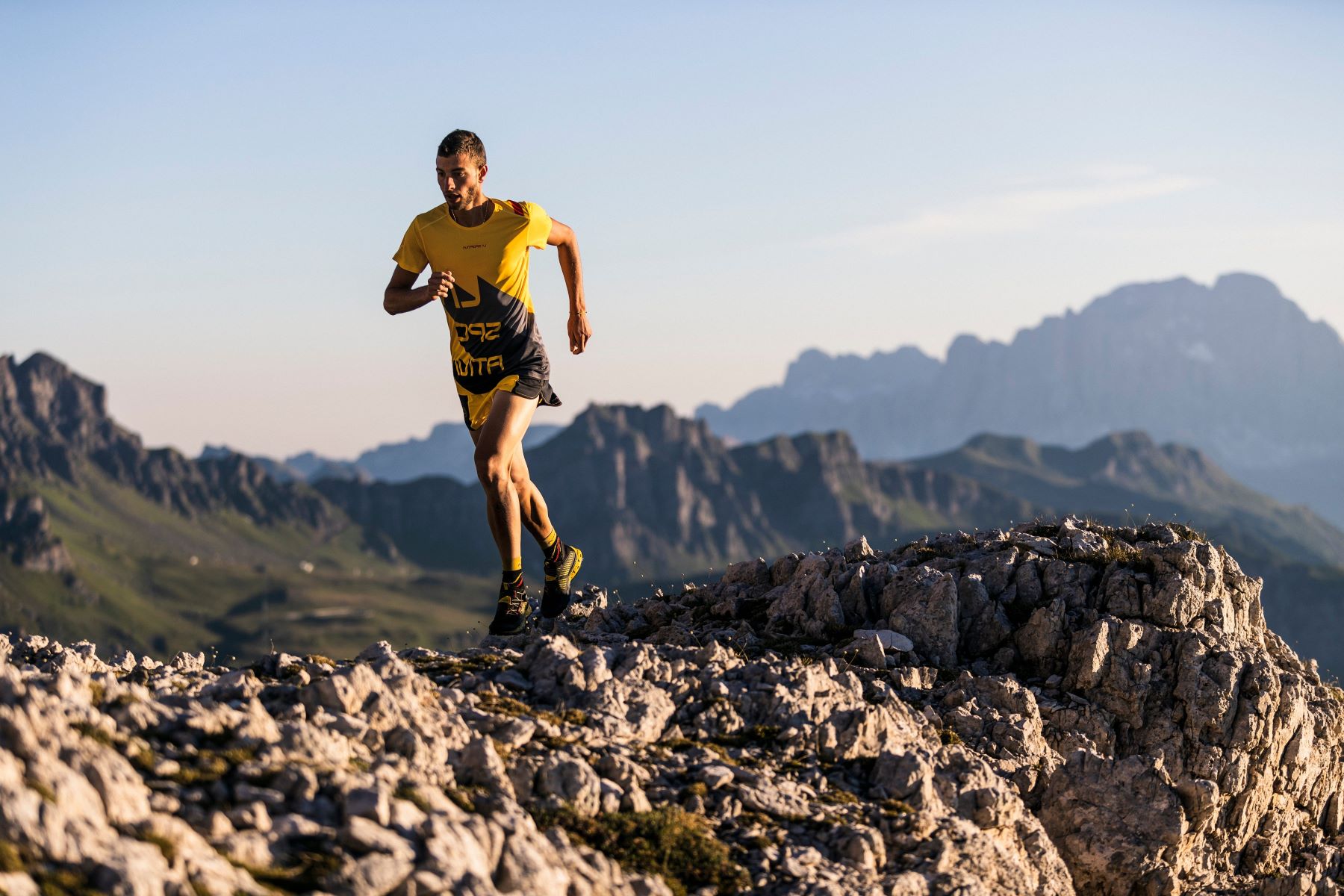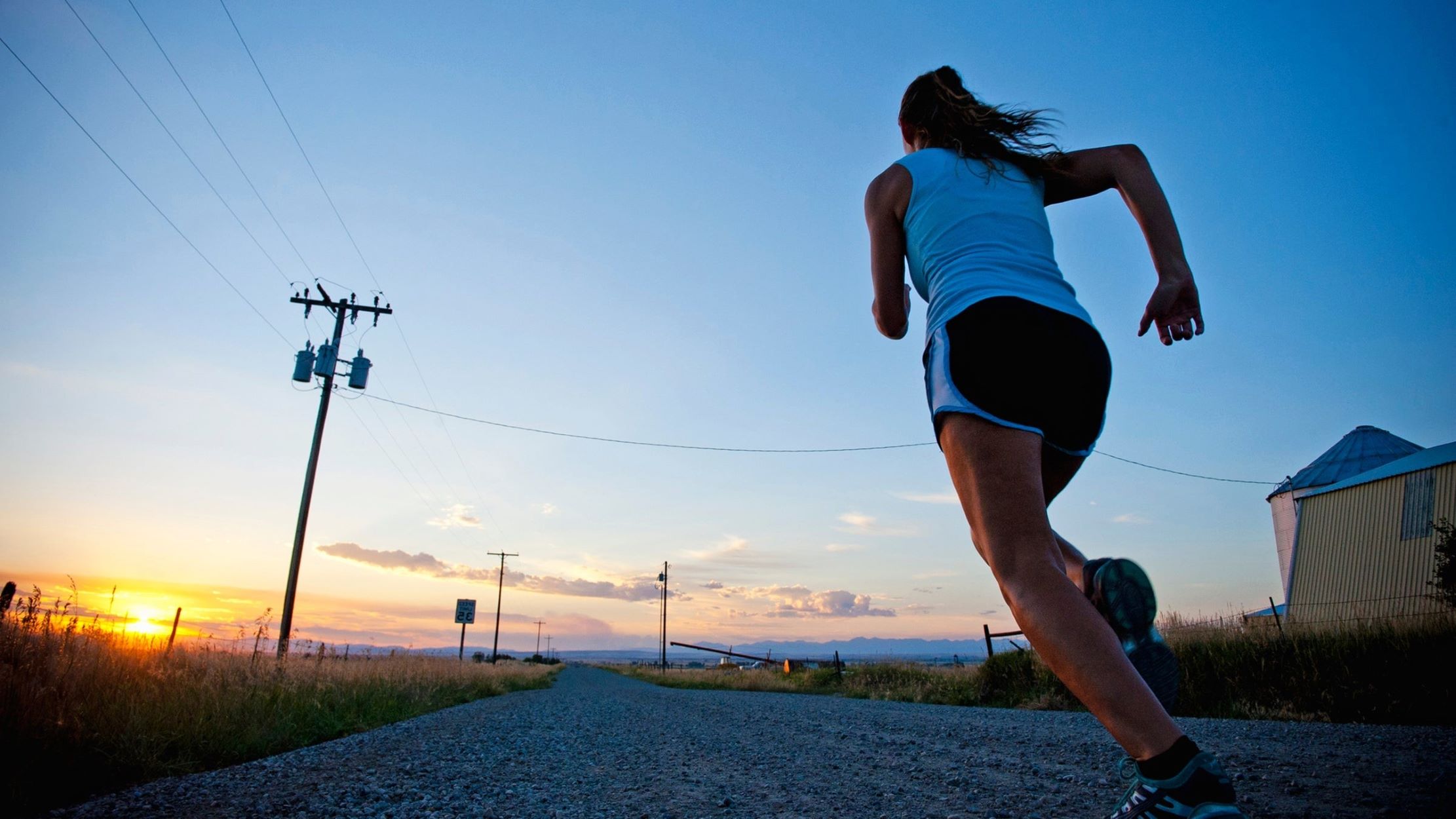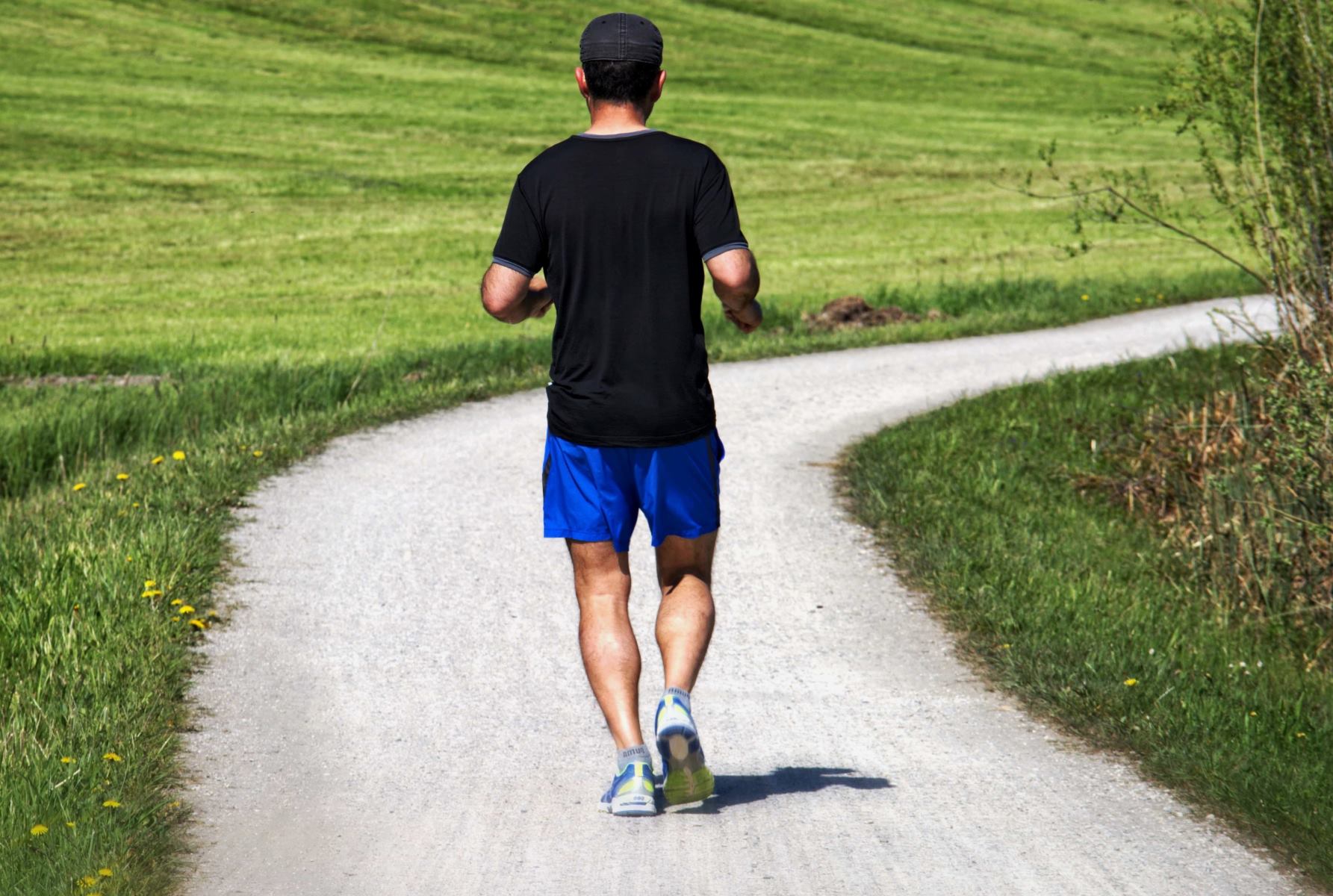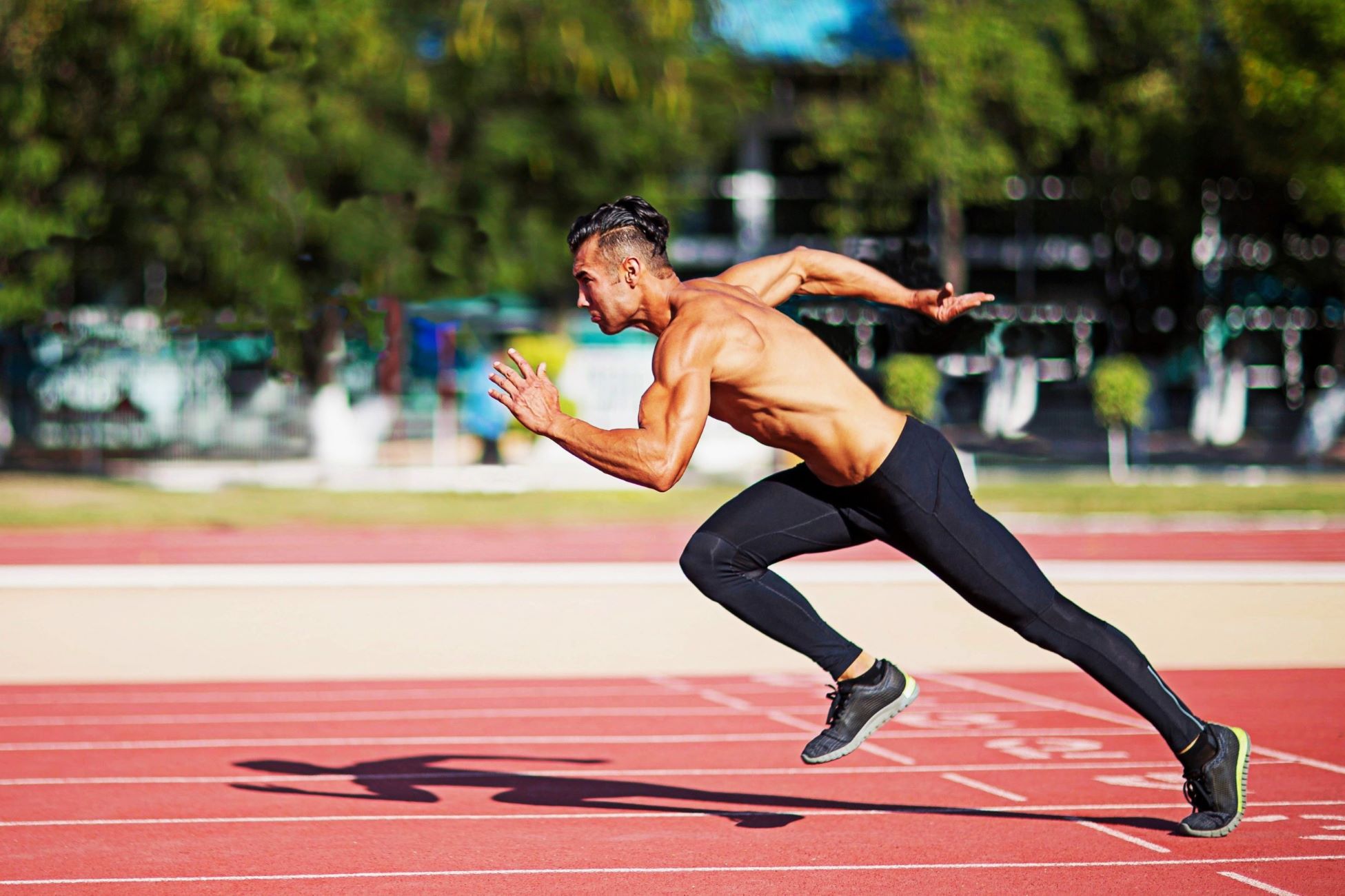Home>Training & Techniques>The Evolution Of Running: Debunking The Myth Of Why We Didn’t


Training & Techniques
The Evolution Of Running: Debunking The Myth Of Why We Didn’t
Published: February 29, 2024
Discover the latest training and techniques in the evolution of running, as we debunk the myths behind why we didn't run. Explore new insights and strategies for improving your running performance.
(Many of the links in this article redirect to a specific reviewed product. Your purchase of these products through affiliate links helps to generate commission for Therunningadvisor.com, at no extra cost. Learn more)
Table of Contents
The History of Running
Running is a fundamental human activity that has evolved over thousands of years, shaping our physical abilities and cultural practices. From the early days of human existence to the modern era, running has played a pivotal role in our survival, development, and recreation.
Early Human Running
The history of running dates back to the origins of humanity. Our early ancestors, the hunter-gatherers, relied on running as a means of survival. They chased down prey over long distances, utilizing endurance running to outlast their targets. This form of persistence hunting required exceptional stamina and paved the way for the development of the human body's remarkable running capabilities.
Running in Ancient Civilizations
As human societies advanced, running became integrated into various cultural and athletic practices. In ancient Greece, running held a prominent place in the Olympic Games, with events such as the stadion and diaulos showcasing the speed and agility of athletes. The significance of running extended beyond sport, as it was also utilized for military training and communication, enabling messengers to cover long distances swiftly.
Evolution of Running as a Sport
The 19th and 20th centuries witnessed the formalization of running as a competitive sport. Track and field events gained popularity, leading to the establishment of organized competitions and the standardization of race distances. The marathon, inspired by the legendary run of Pheidippides, became a symbol of human endurance and determination, culminating in the modern Olympic marathon race.
Running in Contemporary Society
In recent decades, running has experienced a resurgence in popularity, transcending its athletic roots to become a global fitness phenomenon. The advent of recreational running events, such as marathons, half-marathons, and fun runs, has democratized the sport, attracting participants of all ages and abilities. Furthermore, the emergence of running communities, social media platforms, and wearable technology has fostered a vibrant running culture, connecting enthusiasts worldwide.
Read more: Why You Should Give Track Running A Shot
The Enduring Legacy of Running
Throughout history, running has been intertwined with the human experience, leaving an indelible mark on our physical, social, and cultural landscapes. From its primal origins as a survival strategy to its modern-day manifestation as a lifestyle pursuit, running continues to evolve, reflecting the resilience and adaptability of the human spirit.
In summary, the history of running is a testament to our innate capacity for movement and endurance, shaping our past, present, and future in profound ways. As we delve into the science, technology, and societal aspects of running, it is essential to recognize the rich tapestry of human history woven through the timeless act of putting one foot in front of the other.
The Science of Human Evolution and Running
The intricate relationship between human evolution and running is deeply rooted in our biological and physiological makeup. As bipedal beings, our ability to run long distances is a defining trait that has been shaped by millions of years of evolutionary adaptation.
The Evolutionary Advantage of Endurance Running
The evolutionary significance of running can be traced back to our early ancestors, who relied on persistence hunting as a primary means of securing food. Unlike other predators, humans lacked the speed and strength to overpower prey in short bursts. Instead, they leveraged their exceptional endurance to track and chase animals over extended distances until the targets succumbed to exhaustion. This unique hunting strategy not only provided sustenance but also contributed to the development of our anatomical features optimized for running.
Adaptations for Efficient Running
The human body exhibits a range of adaptations that enhance our running capabilities. The structure of our lower limbs, particularly the elongated legs and spring-like Achilles tendons, facilitates efficient energy transfer and propulsion during running. Additionally, the development of sweat glands and the ability to regulate body temperature through perspiration enabled early humans to engage in endurance running without succumbing to heat exhaustion.
The Role of Endurance Running in Brain Development
Beyond physical adaptations, the practice of endurance running has been linked to cognitive development. The sustained aerobic activity associated with running is believed to have contributed to the expansion of the human brain over time. The release of endorphins and other neurochemicals during running may have fostered social bonding and cooperation within early human communities, shaping our neurological and behavioral evolution.
Modern Implications of Evolutionary Running
While contemporary lifestyles have shifted away from the immediate need for running as a survival strategy, the legacy of our evolutionary past continues to influence our relationship with running. The human body's innate capacity for endurance running serves as a testament to our evolutionary heritage, inspiring individuals to embrace running as a form of physical fitness, recreation, and personal challenge.
In essence, the science of human evolution and running illuminates the profound interplay between our biological history and the enduring practice of putting one foot in front of the other. By understanding the evolutionary underpinnings of running, we gain insight into the remarkable journey that has shaped our species and continues to propel us forward in the pursuit of movement and vitality.
The Impact of Technology on Running
The intersection of technology and running has revolutionized the way individuals engage with the sport, ushering in a new era of innovation, performance enhancement, and accessibility. From advanced footwear and wearable devices to digital training platforms, technology has profoundly influenced every facet of the running experience, shaping the way enthusiasts train, compete, and connect with the global running community.
Evolution of Running Gear
Technological advancements have propelled the evolution of running gear, leading to the development of high-performance footwear, apparel, and equipment. Innovations in cushioning materials, midsole designs, and biomechanical analysis have resulted in running shoes that offer enhanced comfort, support, and injury prevention. Furthermore, the integration of lightweight, moisture-wicking fabrics and aerodynamic designs in running apparel has optimized athletes' comfort and performance, demonstrating the transformative impact of technology on running gear.
Read more: 23 Race Signs That We Love
Wearable Fitness Technology
The advent of wearable fitness technology has empowered runners to track and analyze their performance with unprecedented precision. GPS-enabled smartwatches and fitness trackers provide real-time data on distance, pace, heart rate, and elevation, enabling runners to monitor their progress, set goals, and make informed training decisions. Additionally, the proliferation of biometric sensors and smart apparel has facilitated comprehensive insights into running biomechanics, allowing athletes to fine-tune their form and optimize their training regimens.
Digital Training Platforms
Technology has democratized access to expert training resources through digital platforms and mobile applications. Runners can now access personalized training plans, virtual coaching, and interactive workout sessions tailored to their individual goals and abilities. These digital tools not only offer convenience and flexibility but also foster a sense of community and support, connecting runners across geographical boundaries and inspiring collective motivation and accountability.
Virtual Racing and Community Engagement
The rise of virtual racing platforms and online running communities has redefined the traditional race experience, enabling participants to engage in virtual events from any location. Through immersive virtual environments and interactive race simulations, runners can experience the camaraderie and competitive spirit of organized races while transcending physical barriers. Moreover, online forums and social media networks have facilitated global connectivity, allowing runners to share experiences, seek advice, and celebrate achievements, fostering a vibrant and inclusive running community.
In essence, the impact of technology on running has reshaped the sport, empowering individuals to pursue their running aspirations with unprecedented resources and connectivity. As technology continues to evolve, the future of running holds boundless possibilities, promising further advancements that will inspire, support, and elevate the running experience for enthusiasts worldwide.
The Cultural and Societal Factors in Running
Running transcends its physical and athletic dimensions to intersect with diverse cultural and societal influences, shaping its significance as a global phenomenon. Culturally, running embodies a rich tapestry of traditions, rituals, and symbolic meanings that reflect the values and identities of different communities. From ceremonial races in indigenous cultures to the revered status of marathon events in modern society, running serves as a conduit for cultural expression, celebration, and unity.
In many indigenous societies, running holds profound cultural significance, often intertwined with spiritual beliefs and communal practices. Ritualistic running events, such as ceremonial races and endurance challenges, are deeply rooted in the traditions of indigenous peoples, serving as expressions of strength, resilience, and ancestral heritage. These cultural manifestations of running underscore its role as a vehicle for preserving and transmitting indigenous wisdom and values across generations.
Moreover, running has been a catalyst for social change and empowerment, particularly in the realm of gender equality and inclusivity. The global rise of women's running movements has shattered barriers and redefined societal perceptions of female athleticism, fostering a culture of empowerment and solidarity. Women's running events and initiatives have become powerful platforms for advocacy, promoting gender equity, body positivity, and the celebration of women's achievements in the running community.
In the context of societal health and well-being, running has emerged as a unifying force, transcending cultural and geographical boundaries to promote physical fitness, mental resilience, and community engagement. The proliferation of charity runs, fundraising races, and social running clubs has galvanized individuals to rally around meaningful causes, fostering a spirit of altruism and collective impact. Running has become a catalyst for social cohesion, encouraging diverse populations to come together in pursuit of shared goals and collective well-being.
Furthermore, the cultural and societal dimensions of running are intricately woven into the fabric of urban landscapes, where running serves as a means of reclaiming public spaces, fostering social connections, and promoting environmental stewardship. Urban running movements have revitalized cityscapes, transforming streets and parks into vibrant hubs of physical activity and communal interaction. Through organized running events and community-led initiatives, urban environments have been reimagined as inclusive, accessible spaces that promote health, inclusivity, and civic engagement.
In essence, the cultural and societal factors in running underscore its multifaceted role as a conduit for cultural expression, social change, and community well-being. As running continues to evolve, its cultural and societal dimensions will continue to shape and enrich the global running landscape, fostering inclusivity, diversity, and collective empowerment.
The Future of Running: Where Do We Go from Here?
The future of running holds boundless potential, poised at the intersection of technological innovation, cultural evolution, and societal wellness. As we embark on the next chapter of the running journey, several key trajectories are set to shape the landscape of the sport, ushering in a new era of accessibility, inclusivity, and performance enhancement.
Technological Advancements and Personalized Performance
The ongoing convergence of technology and running is set to redefine the way individuals engage with the sport. Advancements in wearable fitness technology, augmented reality, and personalized data analytics will empower runners to access real-time performance insights, personalized training regimens, and immersive virtual experiences. From AI-driven coaching platforms to biofeedback-integrated gear, the future of running will be characterized by tailored, data-driven approaches that optimize individual performance and foster a deeper understanding of biomechanics and physiological responses.
Sustainability and Environmental Consciousness
In response to global environmental challenges, the future of running will witness a heightened emphasis on sustainability and eco-conscious practices. From eco-friendly race events to the development of biodegradable running gear, the running community is poised to lead the charge in promoting environmentally responsible initiatives. Furthermore, the integration of urban green spaces and eco-friendly running routes will underscore the symbiotic relationship between running and environmental stewardship, fostering a culture of mindful, sustainable engagement with the natural world.
Inclusivity and Diversity
The future of running is intrinsically linked to the promotion of inclusivity and diversity within the sport. Efforts to dismantle barriers to entry, celebrate diverse voices, and amplify underrepresented narratives will drive a paradigm shift towards a more inclusive and equitable running community. Initiatives that prioritize accessibility for individuals with disabilities, advocate for gender parity, and celebrate cultural diversity will enrich the fabric of the running experience, fostering a global community that embraces the richness of human diversity and lived experiences.
Read more: Why Runners Should Consider Trying Hot Yoga
Community Engagement and Social Impact
As we look to the future, running will continue to serve as a catalyst for community engagement and social impact. The proliferation of grassroots running movements, community-led initiatives, and collaborative partnerships will amplify the role of running as a vehicle for positive change. From promoting mental health awareness to addressing societal inequities, the running community will harness its collective influence to effect meaningful, sustainable change, fostering a culture of empathy, solidarity, and shared purpose.
In essence, the future of running is characterized by a convergence of technological innovation, environmental consciousness, inclusivity, and community-driven impact. As we chart a course forward, the evolution of running holds the promise of a more connected, sustainable, and inclusive global running community, where every stride taken contributes to a collective journey towards a brighter, more harmonious future.











